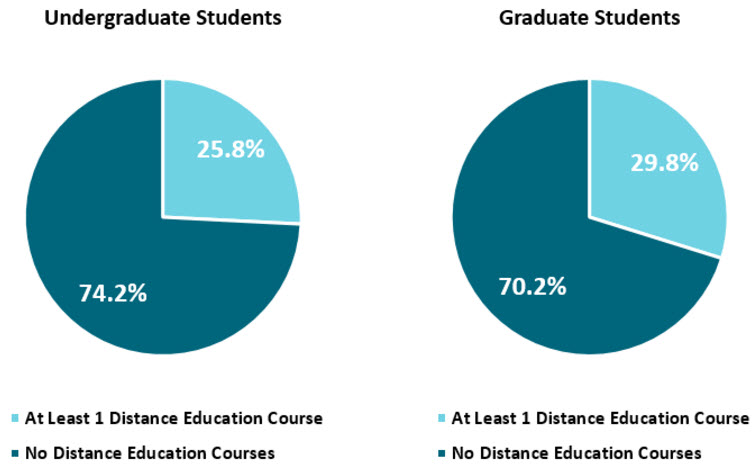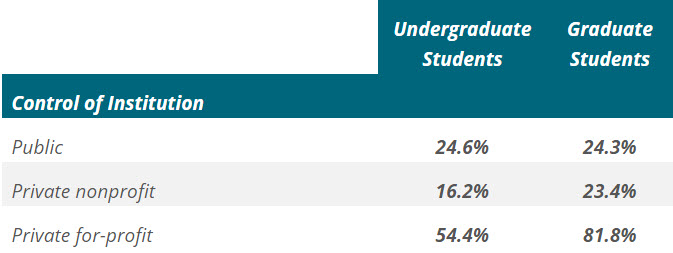For the first time, the recently released Digest of Education Statistics 2013 includes statistics on the percentages of undergraduates and graduates who took distance education and online courses. The 940-page Digest, released in May by the National Center for Education Statistics, Institute of Education Sciences, and the U.S. Department of Education makes available statistical information on American education ranging from Pre-K to graduate-levels. For information about the online learner statistics, please see our blog post entitled “USDOE Report Finds 32% of Undergraduates Took an Online Course in 2011-12.”
The data collected to generate the statistics on distance education students come from the Spring 2013 Integrated Postsecondary Education Data System (IPEDS). IPEDS is a set of annual survey data collected by the National Center for Education Statistics from all colleges, universities and technical and vocational institutions that provide federal financial aid to students. For more information about the methodology for this data collection cycle, see the 2012-13 Integrated Postsecondary Education Data System (IPEDS) Methodology Report. As part of the data collection, institutions report on the number of students who take distance education courses. According to IPEDS, distance education is defined as:
Education that uses one or more technologies to deliver instruction to students who are separated from the instructor and to support regular and substantive interaction between the students and the instructor synchronously or asynchronously.
Technologies used for instruction may include the following: Internet; one-way and two-way transmissions through open broadcasts, closed circuit, cable, microwave, broadband lines, fiber optics, satellite or wireless communication devices; audio conferencing; and video cassette, DVDs, and CD-ROMs, if the cassette, DVDs, and CD-ROMs are used in a course in conjunction with the technologies listed above.
Thus distance education would encompass online learners, but also could include students who were not online learners.
Undergraduate Distance Education Findings
Based on the data collected for 2012-13, Table 311.15 (p. 453) displays the percentage of undergraduates who took any distance education courses in Fall 2012 was 25.8%, while 11.3% exclusively took distance education courses. In general, 24.6% of undergraduates students from public institutions at least one distance education course, but this ranged from 21.8% for public 4-year institutions up to 27.3% for public 2-year institutions. The range was even larger for private institutions. Only 16.2% of students attending private, nonprofit institutions took at least one distance education course compared to 54.4% of those attending private, for-profit institutions.
Graduate Distance Education Findings
Table 311.15 (p. 453) also contained distance education information on postbaccalaureate distance education. Almost 30% of postbaccalaureate students took at least one distance education course in 2012-13. Again, there was huge range based institution type. For public institutions, 24.3% of postbaccalaureate students took at least one distance education course. The percentage was slightly lower (23.4%) for students from private, nonprofit institutions, and rose to 81.8% for students from private, for-profit institutions.


Conclusion
The distance education statistics from 2013 which are cited here are lower than the online learning statistics collected in 2011-12 and published in the 2013 Digest. Given the differences in datasets and the challenges with each collection, these figures are likely best considered as ballpark estimates. In any event, it is clear that a relatively large number of undergraduate and graduate students are taking online and distance education courses. Given the accessibility and sometimes affordability benefits that online and distance education courses may provide, the percentage of students taking advantage of these online learning options is likely to grow, as will the importance of being competent to learning in this medium.
